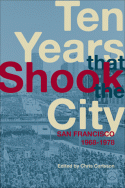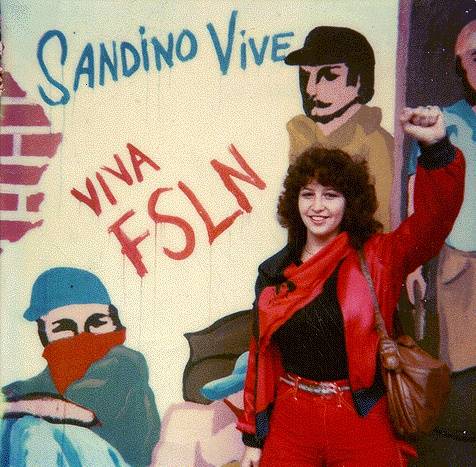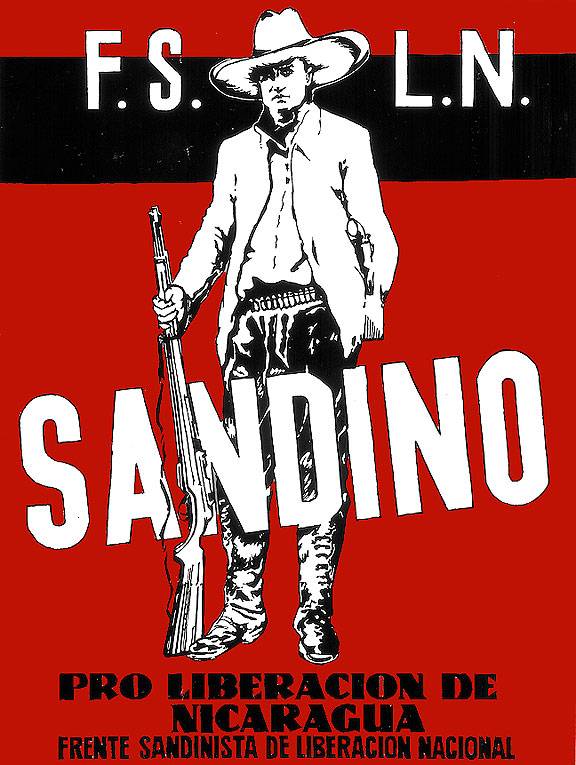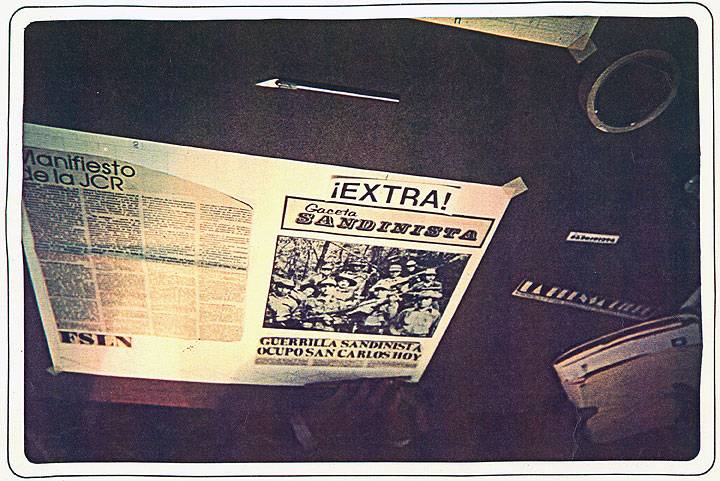Sandinistas in SF: Difference between revisions
(Addressing Injustice logo added) |
(broken page link to "Bernal Heights Social Uses" which no longer exists. changed to Bernal Heights Boulevard) |
||
| (One intermediate revision by one other user not shown) | |||
| Line 17: | Line 17: | ||
[[Image:polbhem1$viva-fsln-mission-art.jpg]] | [[Image:polbhem1$viva-fsln-mission-art.jpg]] | ||
'''Nicaraguans in San Francisco did important support work for the 1978 revolution, especially in the Mission. Several people trained on local hilltops for guerrilla war, running around the [[Bernal Heights | '''Nicaraguans in San Francisco did important support work for the 1978 revolution, especially in the Mission. Several people trained on local hilltops for guerrilla war, running around the [[Bernal Heights Boulevard | Bernal Heights ring road ]]five times a day.''' | ||
''Photo: Nina Serrano'' | ''Photo: Nina Serrano'' | ||
| Line 59: | Line 59: | ||
[[Central America 1988 |Prev. Document]] [[Managua North: San Francisco's Solidarity Movement |Next Document]] | [[Central America 1988 |Prev. Document]] [[Managua North: San Francisco's Solidarity Movement |Next Document]] | ||
[[category:Dissent]] [[category:Mission]] [[category:Bernal Heights]] [[category:1970s]] [[category:Nicaraguan]] [[category:Ten Years That Shook the City]] [[category:Underground press]] | [[category:Dissent]] [[category:Mission]] [[category:Bernal Heights]] [[category:1970s]] [[category:Nicaraguan]] [[category:Ten Years That Shook the City]] [[category:Underground press]] [[category:Bay Area Social Movements]] | ||
Latest revision as of 15:26, 20 March 2015
"I was there..."
Listen to an excerpt from "Poetry and Solidarity in the Mission" read by author Alejandro Murguía:
<iframe src="https://archive.org/embed/11TenYears--gacetaSandinista" width="500" height="30" frameborder="0" webkitallowfullscreen="true" mozallowfullscreen="true" allowfullscreen></iframe>
by mp3.
![]()
Previous stop: Women's liberation newspapers
Next Stop #12: Flowering communalism
Nicaraguans in San Francisco did important support work for the 1978 revolution, especially in the Mission. Several people trained on local hilltops for guerrilla war, running around the Bernal Heights ring road five times a day.
Photo: Nina Serrano
Early one morning in 1974 just before New Year’s Eve, Roberto came to my house. “We have to meet,” he said. He had urgent news from Nicaragua. An FSLN commando had taken over the house of Chema Castillo in Managua and had captured a slew of Somoza’s lackeys. They wanted to exchange them for Frente prisoners, five million dollars, and passage out of the country. The Frente had issued a communiqué in Managua; our task was to translate it, print it, and distribute it here in San Francisco. I went to work immediately on the translation, while Roberto organized a march. That Saturday morning, with a thousand copies of the communiqué printed under the banner of La Gaceta Sandinista, we met with several dozen people at the 24th Street BART Station. Casimiro Sotelo and Roberto spoke at the rally, then we all marched down Mission Street. There were maybe 30 of us at that march. We carried these beautiful black and red posters of Sandino silkscreened by La Raza Graphics, and we waved them at passing traffic, and stood outside El Tico-Nica bar exchanging insults with Somoza sympathizers. This was the first rally ever held for Nicaragua in the Mission District or the United States.
Although it was a small start, word soon spread through the Nicaraguan community. The Frente sympathizers were organized around El Comite Civico Latinoamericano Pro Nicaragua en los Estados Unidos (El Comite Civico, for short), which published La Gaceta Sandinista, a newspaper that brought stories, reports, photographs, and Frente communiqués to an information-starved community of Nicaraguan exiles. The meetings of La Gaceta took place at a storefront on 22nd and Bartlett, and the first members were Walter Ferretti, Raúl Venerio, Lygia S., Haroldo Solano, and Bérman Zúniga. All of them would later play an important role in the overthrow of Somoza.
While we kept on organizing cultural events and printing the newspaper, on the sly we bought a couple of shotguns at a pawnshop on Mission Street. Later, the key contact of the Frente, who always stayed in the background, Herty Levitez, known by his pseudonym “Mauricio,” was arrested crossing the border into Mexico with a car full of weapons. Our shotguns were part of his stash. He did six months in a federal penitentiary for that one.
But other work was more successful. A solidarity committee popped up in LA, another one in Washington DC. Roberto created a Non-Intervention in Nicaragua Committee (NIN) made up of North Americans to pressure Congress to stop military aid to the Somoza regime. Eventually NIN scored a two day hearing on human rights in Nicaragua, Guatemala, and El Salvador before the Subcommittee on International Organizations of the House of Representatives in Washington DC. Several documents were submitted to the committee including sworn statements by Pedro Joaquín Chamorro, regarding human rights violations he observed while being held a prisoner in Somoza’s jails, and a letter from Monsignor Miguel Obando Bravo, Archbishop of Nicaragua, regarding restrictions on religious expression. Father Fernando Cardenal, brother of Ernesto Cardenal and also a priest, testified at the hearings about the imprisonment, torture, and disappearance of campesinos in Nicaragua. The hearings also raised the contradictions in State Department policy with regard to Central America, in particular Nicaragua, since the United States was providing training to National Guard members in counterinsurgency, irregular warfare, jungle warfare, and advance police and investigation tactics that were being used against workers, students, intellectuals, and other political opponents of the Somoza dictatorship. This support of the dictator was in direct violation of the Rio Pact, a mutual assistance document dating back to 1947 and signed by the US which states, “the obligation of mutual assistance and common defense of the American Republics is essentially related to their democratic ideals.”
Old-fashioned paste-up of La Gaceta Sandinista in the Mission, c. 1978.
Image: courtesy Nina Serrano
By 1977 with the Nicaraguan resistance growing stronger, La Gaceta Sandinista’s print run of 5,000 copies (all of which were given away free) went like hot tortillas to the Nicaraguan community.
by Alejandro Murguia, from his essay "Poetry and Solidarity in the Mission," in the anthology "Ten Years That Shook the City: San Francisco 1968-78" (City Lights Foundation: 2011), edited by Chris Carlsson.
 Find the book at City Lights!
Find the book at City Lights!
<iframe src="https://archive.org/embed/roxfin" width="640" height="480" frameborder="0" webkitallowfullscreen="true" mozallowfullscreen="true" allowfullscreen></iframe>
Roxanne Dunbar-Ortiz describes how Nicaraguan Revolution was affected by having had a number of its leading militants live in San Francisco during the 1970s.
Video interview: Chris Carlsson, edited by Joe Caffentzis
Alejandro Maciel, one of the founders of the Mission Cultural Center, stands before his mural-style poster of Mexican rebel Lucio Cabañas.
Photo: Nina Serrano






